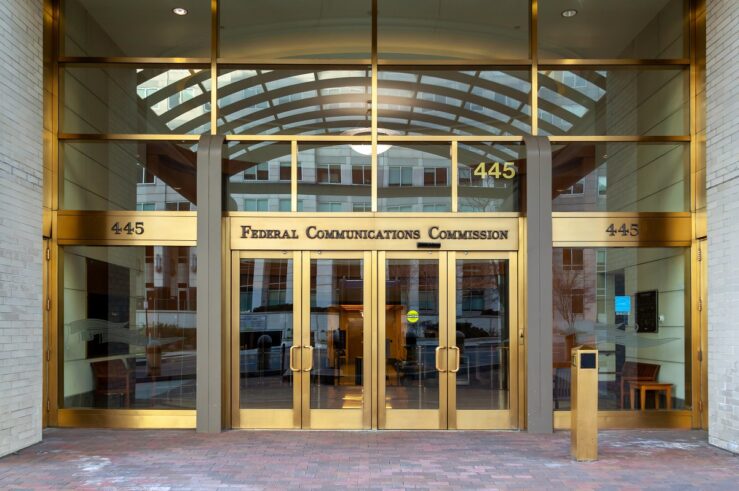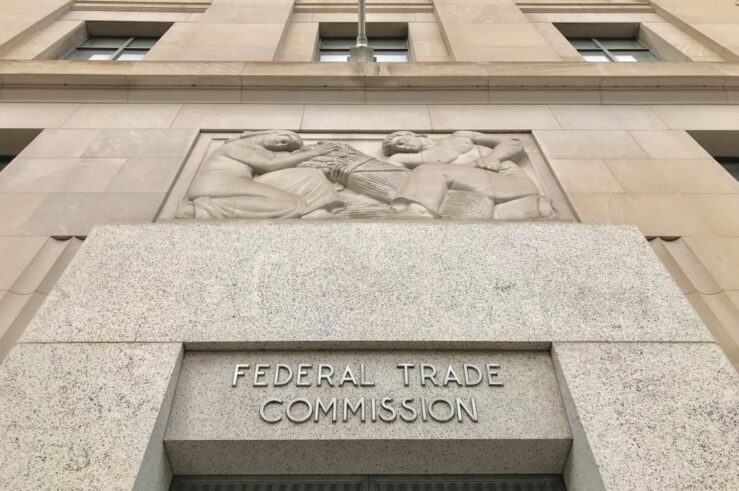Showing archive for: “Major Questions Doctrine”
After Loper Bright, FTC Awaits Its Turn At-Bat
In an Agencies Roundup post several weeks ago, I revisited the Federal Trade Commission’s (FTC) newly adopted—and not-yet-effective—rule barring the use of noncompete agreements across much of the U.S. economy. It was not my first such post (my ninth, if I’ve counted correctly, and if readers will forgo armchair diagnoses of monomania). The last time ... After Loper Bright, FTC Awaits Its Turn At-Bat
FCC’s Digital-Discrimination Rules: An Open Invitation to Flood the Field with Schlock
A half-dozen lawsuits have been filed to date challenging the digital-discrimination rules recently approved by the Federal Communications Commission (FCC). These cases were consolidated earlier this month and will now be heard by the 8th U.S. Circuit Court of Appeals. This has the hallmarks of a significant case that will almost certainly involve the U.S. ... FCC’s Digital-Discrimination Rules: An Open Invitation to Flood the Field with Schlock
A Holiday Hootenanny Hiatus, But First, Some Title II Talk
For those of who’ve been doing the Telecom Two-Step over the past year, the holiday break can’t come soon enough. Last week, comments were due on the Federal Communications Commission’s (FCC) latest proposal to impose Title II common-carrier regulation under the guise of net neutrality national security. Before that, we had the FCC’s new and ... A Holiday Hootenanny Hiatus, But First, Some Title II Talk
Hands Across the Agencies
In the headline to a Dec. 7 press release, the Federal Trade Commission (FTC) announced that it, in concert with the U.S. Justice Department (DOJ) and U.S. Department of Health and Human Services (HHS), had managed to “Lower Health Care and Drug Costs, Promote Competition to Benefit Patients, Health Care Workers.” According to the subhead: ... Hands Across the Agencies
Net Neutrality and Broken Records
I don’t mean to sound like a broken record, but why is the Federal Communications Commission (FCC) playing a broken record? I’ve been writing a fair bit about Federal Trade Commission (FTC) rulemaking initiatives. On the theory that you deserve a nominal break from all of that, this post is mostly about the FCC. On ... Net Neutrality and Broken Records
All Aboard! The Title II Express Is Leaving the Station
At lunch last week, I handed out the first of my new business cards with the title “Director, Hootenanny Division.” My lunchmate looked down and said, “Sounds fun, what do you do?” Then, I had to explain that part of the job involves watching open meetings of the Federal Communications Commission (FCC) and reporting on ... All Aboard! The Title II Express Is Leaving the Station
Gomez Confirmed to FCC: Here Comes Net Neutrality, But First…
The U.S. Senate moved yesterday in a 55-43 vote to confirm Anna Gomez to the Federal Communications Commission. Her confirmation breaks a partisan deadlock at the agency that has been in place since the beginning of the Biden administration, when Commissioner Jessica Rosenworcel vacated her seat to become FCC chair. The commission now has a ... Gomez Confirmed to FCC: Here Comes Net Neutrality, But First…
Biweekly FTC Roundup: Total Drama Island Edition
In a Feb. 14 column in the Wall Street Journal, Commissioner Christine Wilson announced her intent to resign her position on the Federal Trade Commission (FTC). For those curious to know why, she beat you to the punch in the title and subtitle of her column: “Why I’m Resigning as an FTC Commissioner: Lina Khan’s ... Biweekly FTC Roundup: Total Drama Island Edition
No, Chevron Deference Will Not Save the FTC’s Noncompete Ban
The Federal Trade Commission (FTC) announced in a notice of proposed rulemaking (NPRM) last month that it intends to ban most noncompete agreements. Is that a good idea? As a matter of policy, the question is debatable. So far as the NPRM is concerned, however, that debate is largely hypothetical. It is unlikely that any ... No, Chevron Deference Will Not Save the FTC’s Noncompete Ban
Biweekly FTC Roundup: Highly Skilled Sandwich Maker Edition
Happy New Year? Right, Happy New Year! The big news from the Federal Trade Commission (FTC) is all about noncompetes. From what were once the realms of labor and contract law, noncompetes are terms in employment contracts that limit in various ways the ability of an employee to work at a competing firm after separation ... Biweekly FTC Roundup: Highly Skilled Sandwich Maker Edition
The FTC’s NPRM on Noncompete Clauses: Flirting with Institutional Crisis
The Federal Trade Commission’s (FTC) Jan. 5 “Notice of Proposed Rulemaking on Non-Compete Clauses” (NPRMNCC) is the first substantive FTC Act Section 6(g) “unfair methods of competition” rulemaking initiative following the release of the FTC’s November 2022 Section 5 Unfair Methods of Competition Policy Statement. Any final rule based on the NPRMNCC stands virtually no ... The FTC’s NPRM on Noncompete Clauses: Flirting with Institutional Crisis
The New FTC Section 5 Policy Statement: Full of Sound and Fury, Signifying Nothing?
The Federal Trade Commission’s (FTC) Nov. 10 Policy Statement Regarding the Scope of Unfair Methods of Competition Under Section 5 of the Federal Trade Commission Act—adopted by a 3-1 vote, with Commissioner Christine Wilson issuing a dissenting statement—holds out the prospect of dramatic new enforcement initiatives going far beyond anything the FTC has done in ... The New FTC Section 5 Policy Statement: Full of Sound and Fury, Signifying Nothing?
















